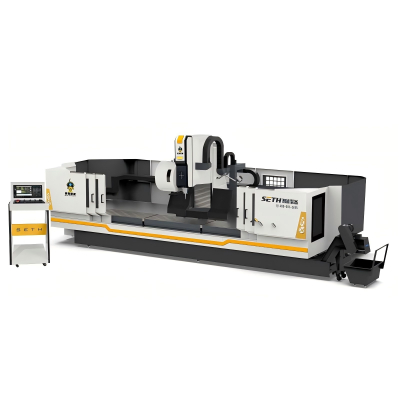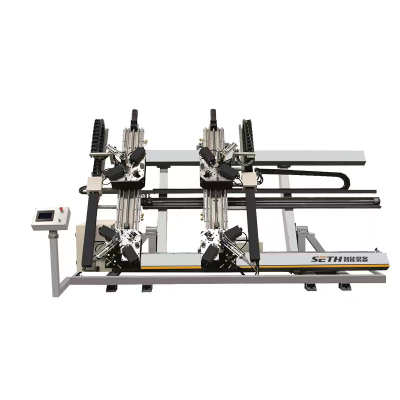Aluminum Profile Processing Equipment: Pioneering Trends Shaping the Future of Manufacturing
2025/09/13 14:05
As global demand for lightweight, durable, and sustainable materials surges—driven by booming sectors like automotive, construction, and renewable energy—aluminum profiles have emerged as a cornerstone material. This growth has sparked a revolution in aluminum profile processing equipment, with manufacturers racing to integrate cutting-edge technologies to enhance efficiency, precision, and sustainability. Industry experts predict that the next five years will see unprecedented advancements in automation, (intelligence), and eco-friendliness, reshaping how aluminum profiles are produced worldwide.
Automation Takes Center Stage: From Semi-Auto to Fully Integrated Lines
Gone are the days of labor-intensive, semi-automated aluminum processing. Today, leading equipment suppliers are rolling out fully automated production lines that minimize human intervention and maximize consistency. For instance, companies like SCHINDLER and HGG Profiling Equipment have launched integrated systems that combine cutting, drilling, milling, and surface treatment into a single, seamless workflow. These lines use robotic arms equipped with high-precision sensors to handle aluminum profiles of varying sizes, reducing processing time by up to 40% and error rates to near zero.
“Automation isn’t just a luxury—it’s a necessity,” says Mark Thompson, a senior analyst at Manufacturing Insights. “With labor shortages plaguing the manufacturing sector globally, equipment that can operate 24/7 with minimal oversight gives companies a critical competitive edge. We expect over 70% of mid-to-large aluminum processing facilities to adopt fully automated lines by 2028.”
Intelligence Redefines Precision: AI and IoT Drive Data-Driven Manufacturing
The rise of Industry 4.0 has transformed aluminum profile processing equipment into “smart” assets, thanks to the integration of artificial intelligence (AI) and the Internet of Things (IoT). Modern machines are embedded with IoT sensors that collect real-time data on parameters like temperature, pressure, and cutting speed. This data is then analyzed by AI algorithms to optimize performance—for example, adjusting cutting tools to prevent wear and tear or predicting maintenance needs before breakdowns occur.
Chinese equipment giant Guangdong King-Mazon Machinery Co., Ltd. recently unveiled its AI-powered aluminum cutting machine, which uses machine learning to adapt to different aluminum alloys and thicknesses. “Our machine can learn from thousands of processing tasks, continuously improving its precision,” explains Li Wei, the company’s R&D director. “This not only reduces material waste but also ensures that each profile meets the strictest quality standards.”
Green Manufacturing: Reducing Carbon Footprints in Equipment Design
Sustainability has become a top priority for the aluminum industry, and processing equipment is no exception. Manufacturers are now focusing on developing energy-efficient and eco-friendly machines that reduce carbon emissions and minimize environmental impact. For example, many new aluminum extrusion presses use variable-frequency drives (VFDs) to optimize energy consumption, cutting electricity usage by 20-30% compared to traditional models.
Additionally, equipment makers are exploring recycled materials in machine construction and designing systems that capture and reuse waste heat. German firm SMS group, a leader in aluminum processing technology, has introduced an extrusion line that recovers up to 60% of the heat generated during processing, using it to preheat raw materials. “Sustainability is no longer a buzzword—it’s a business imperative,” says Sarah Müller, SMS group’s sustainability manager. “Our customers are increasingly demanding equipment that aligns with their net-zero goals, and we’re rising to that challenge.”
Customization and Flexibility: Meeting Diverse Industry Needs
As aluminum profiles find applications in a wide range of industries—from electric vehicles (EVs) to solar panels—equipment needs are becoming more diverse. To address this, manufacturers are developing flexible processing solutions that can handle multiple profile shapes, sizes, and finishes without extensive retooling.
For the automotive sector, which requires complex aluminum components for EV chassis, companies like Comau have created modular processing cells that can switch between cutting, bending, and assembling different profiles in minutes. “The auto industry is evolving at a rapid pace, with new EV models launching every year,” says Marco Gaiotti, Comau’s aluminum processing specialist. “Our flexible equipment allows manufacturers to adapt quickly to changing design requirements, reducing time-to-market for new products.”
Looking Ahead: A Future of Innovation and Collaboration
Industry leaders agree that the future of aluminum profile processing equipment will be defined by ongoing innovation and cross-industry collaboration. As demand for aluminum grows—particularly in sustainable sectors—equipment makers will need to partner with material scientists, software developers, and end-users to create even more advanced solutions.
“ We’re only scratching the surface of what’s possible,” says Thompson. “In the coming years, we could see the integration of 3D printing into aluminum profile processing, or the development of self-learning machines that can predict market demands and adjust production accordingly. The key is for companies to embrace change and invest in R&D to stay ahead of the curve.”
With automation, intelligence, sustainability, and flexibility leading the way, aluminum profile processing equipment is poised to play a pivotal role in building a more efficient, sustainable, and innovative manufacturing future.



